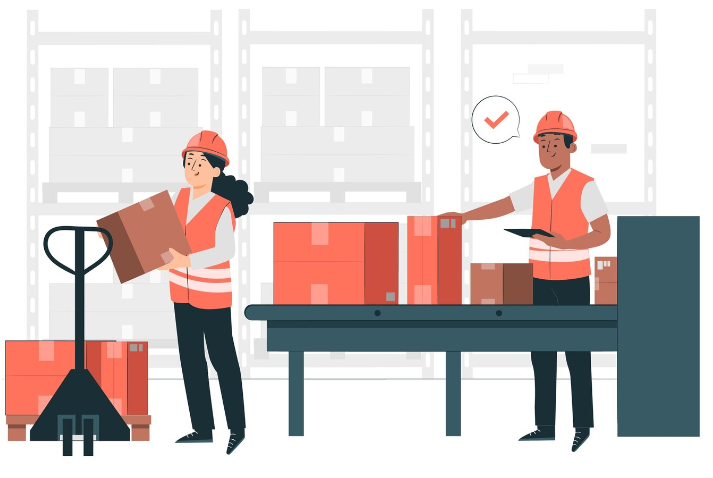Table of Contents
7 Key Strategies to Reduce Shipping Costs
Time: Oct 09,2024 Author: SFC Source: www.sendfromchina.com
Shipping is a necessary expense for eCommerce businesses, but reducing shipping costs can lead to substantial savings and better customer service. From negotiating with carriers to optimizing packaging, there are many ways to lower your shipping expenses without sacrificing efficiency or quality.
In this guide, we’ll explore the core factors influencing shipping fees and present effective strategies for reducing costs. Whether you’re looking to streamline your operations or pass savings onto your customers, these insights will help you make smarter shipping decisions.

1. Factors Affecting Shipping Costs
Understanding the various factors that influence shipping costs is essential for any business looking to optimize its logistics operations.
Shipping Distance
The distance between the shipping origin and destination significantly impacts costs. Generally, the farther the distance, the higher the shipping fee. Businesses can mitigate costs by evaluating regional distribution centers to minimize shipping distances.
Package Size and Weight
Shipping carriers often base their fees on package dimensions and weight. Larger and heavier packages incur higher costs. It’s crucial to accurately measure and weigh packages to ensure cost-effective shipping.
Shipping Method
The chosen shipping method—ground, air, or sea—affects costs. Air shipping is typically faster but more expensive than ground shipping. Analyzing delivery timelines and cost trade-offs can help in selecting the right method.
Carrier Choices
Different carriers have varying rates and service levels. Businesses should research and compare rates from multiple carriers to find the best fit for their shipping needs.
Seasonal Demand Fluctuations
Shipping costs can fluctuate based on seasonal demand. During peak seasons, such as holidays, rates may increase. Planning ahead can help businesses avoid unnecessary expenses during these high-demand periods.
2. How to Calculate Shipping Costs

Calculating shipping costs accurately is vital for effective budgeting and pricing strategies.
Dimensional Weight Pricing
Many carriers now use dimensional weight pricing, which considers both the weight and volume of the package. Understanding this pricing structure helps businesses choose packaging that minimizes costs.
Accessorial Charges
Additional fees may apply for services like residential delivery, signature confirmation, or fuel surcharges. Awareness of these charges can help businesses avoid unexpected costs.
Fuel Surcharges
Fuel prices fluctuate, affecting shipping costs. Many carriers apply fuel surcharges based on current fuel prices, so it's essential to stay informed about these changes to anticipate costs.
Use SFC Shipping Calculator
SFC shipping calculator helps you estimate costs quickly and accurately, ensuring you choose the best options for your needs.
3. 7 Key Strategies to Reduce Shipping Costs

Now that we understand the factors influencing shipping costs and how to calculate them, let’s explore effective strategies for reducing these expenses.
Negotiate with Carriers
One of the most effective ways to lower shipping costs is to negotiate rates with carriers. Businesses that ship frequently may be eligible for discounts based on volume. If your business ships frequently, use that volume as a bargaining chip to secure discounts. Additionally, forming lasting relationships with carriers often leads to more favorable rates and terms, especially if you commit to regular business. Engaging in discussions with multiple carriers can yield better rates and terms.
Utilize Technology for Shipping Management
Implementing shipping management software can streamline operations and reduce costs. These platforms can compare carrier rates, automate label printing, and track shipments, ensuring efficiency and cost-effectiveness. Advanced shipping software allows businesses to automate tasks such as label generation, tracking, and rate comparisons, minimizing manual errors and saving time. By integrating these tools with inventory and order management systems, companies can optimize shipping routes and consolidate shipments, ultimately lowering expenses.
Optimize Packaging

Using the right packaging can significantly reduce shipping costs. Businesses should assess whether they can switch to lighter materials or smaller boxes without compromising product integrity. Using appropriately sized boxes and materials can lower dimensional weight charges imposed by carriers, ensuring that businesses only pay for the space they actually use. Additionally, lightweight and durable packaging materials can help protect products without adding unnecessary weight, further reducing shipping costs. Custom packaging solutions may also provide savings.
Consolidate Shipments
Consolidating multiple orders into a single shipment can save costs. It allows businesses to take advantage of bulk shipping rates, which are often more cost-effective than sending individual parcels. Fewer shipments also mean reduced handling fees and accessorial charges, helping to further cut costs.
Implement Flat-Rate Shipping
Implementing flat-rate shipping can reduce shipping costs by providing predictable pricing, regardless of package weight or destination, which simplifies budgeting and eliminates surprise charges. For businesses that ship a variety of products, flat-rate shipping helps streamline costs by allowing them to send heavier or bulkier items without incurring higher rates.
Consider Regional Carriers
Considering regional carriers can reduce shipping costs by offering lower rates compared to national carriers, especially for short-distance deliveries within specific regions. Regional carriers often specialize in local markets, which allows them to provide more competitive pricing, faster delivery times, and fewer surcharges. By using a regional carrier for nearby shipments, businesses can avoid paying the higher rates typically associated with national carriers.
Review Shipping Policies Regularly
Reviewing shipping policies regularly can reduce shipping costs by ensuring that businesses stay up to date with carrier rate changes, service updates, and potential new discounts. As shipping rates fluctuate and carrier services evolve, regularly assessing policies allows businesses to adjust and choose the most cost-effective options. The proactive approach helps avoid overpaying for services or missing out on better shipping solutions.
4. Is Outsourcing Fulfillment a Good Idea

Outsourcing fulfillment can be a viable option for businesses looking to reduce shipping costs and enhance efficiency. Third-party logistics (3PL) providers often have established relationships with carriers, allowing them to negotiate better rates. 3PLs also offer expertise in inventory management and shipping processes, which can lead to further savings.
However, it’s essential to conduct thorough research before outsourcing. Businesses must consider factors such as the provider's reliability, technology capabilities, and service levels. A strategic partnership with a reputable 3PL can yield significant long-term savings and efficiency gains.
5. Get Started with SFC Services
SFC stands at the forefront of order fulfillment with cutting-edge facilities in Shenzhen, China. Utilizing sophisticated software, we specialize in seamless and trustworthy fulfillment solutions for ecommerce, dropshipping, and crowdfunding platforms. At SFC, we are dedicated to accelerating your business growth through secure warehousing, efficient processing, customizable packaging options, and adaptable shipping strategies while saving you time and money.
Whether you have or do not have a fulfillment partner, particularly your products manufactured in China, you should consider SFC. Click the button below and get help from SFC logistics experts.
What Makes SFC Special
Over 17 Years of 3PL and Order Fulfillment Experience
All-in-one Tracking Number
Popular Platform API Integration
30 Days of Free Storage
No Hidden Fee
Custom Packaging
Worldwide shipping solutions
Value-added Services
All-in-one Tracking Number
Popular Platform API Integration
30 Days of Free Storage
No Hidden Fee
Custom Packaging
Worldwide shipping solutions
Value-added Services

6. FAQs
1. What factors should I consider when choosing a shipping carrier?
When choosing a shipping carrier, consider rates, delivery speed, service reliability, customer service, and available shipping options.
2. How can I reduce dimensional weight charges?
To reduce dimensional weight charges, use appropriately sized packaging and avoid excessive void fill. Lightweight materials can also help lower overall shipping costs.
3. Is it better to use flat-rate shipping?
Flat-rate shipping can simplify pricing for customers and can be beneficial if you can absorb some costs. It often encourages larger orders, potentially increasing revenue.
4. How often should I review my shipping strategy?
Businesses should review their shipping strategy at least quarterly to stay informed about changes in carrier rates, shipping technology, and customer preferences.
5. Are there any hidden shipping fees I should be aware of?
Yes, be aware of accessorial charges for services like residential delivery, signature requirements, and fuel surcharges. Understanding these fees can help you budget more effectively.
 Post Views:4072
Post Views:4072
Copyright statement: The copyright of this article belongs to the original author. Please indicate the source for reprinting.
Previous Post
3PL vs In-house Logistics: Why You Should Consider Third-party Logistics
Next Post
TAGS
Hot Research
Get a Custom China Fulfillment Solution with FREE Storage for 30 Days
 Want to know about our services, fees or receive a custom quote?
Want to know about our services, fees or receive a custom quote?
 Please fill out the form on the right and we will get back to you within a business day.
Please fill out the form on the right and we will get back to you within a business day.
 The more information you provide, the better our initial response
will be.
The more information you provide, the better our initial response
will be.





 TAGS:
TAGS: